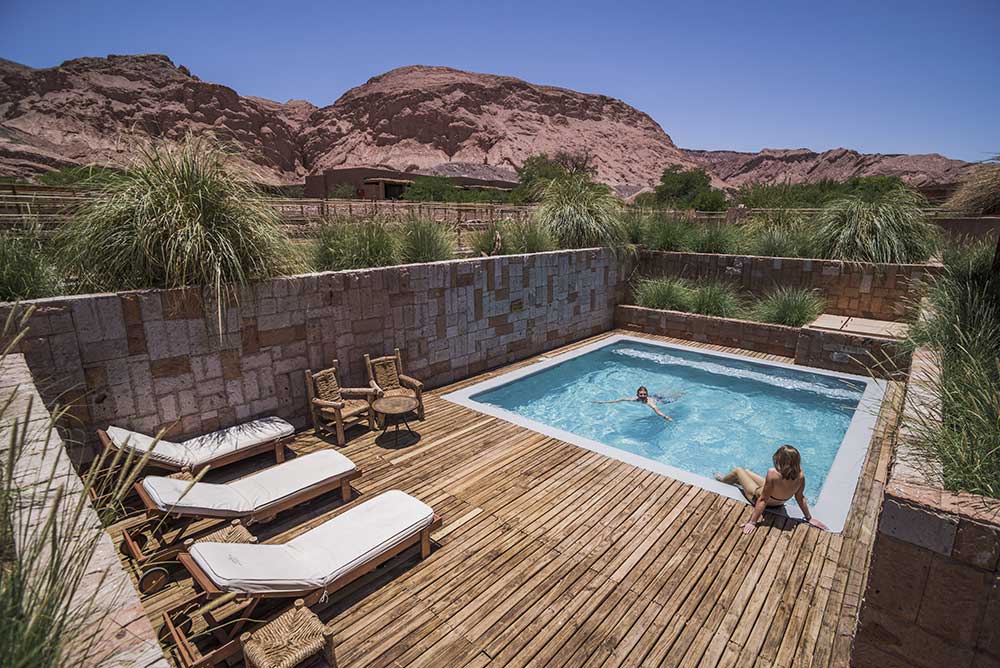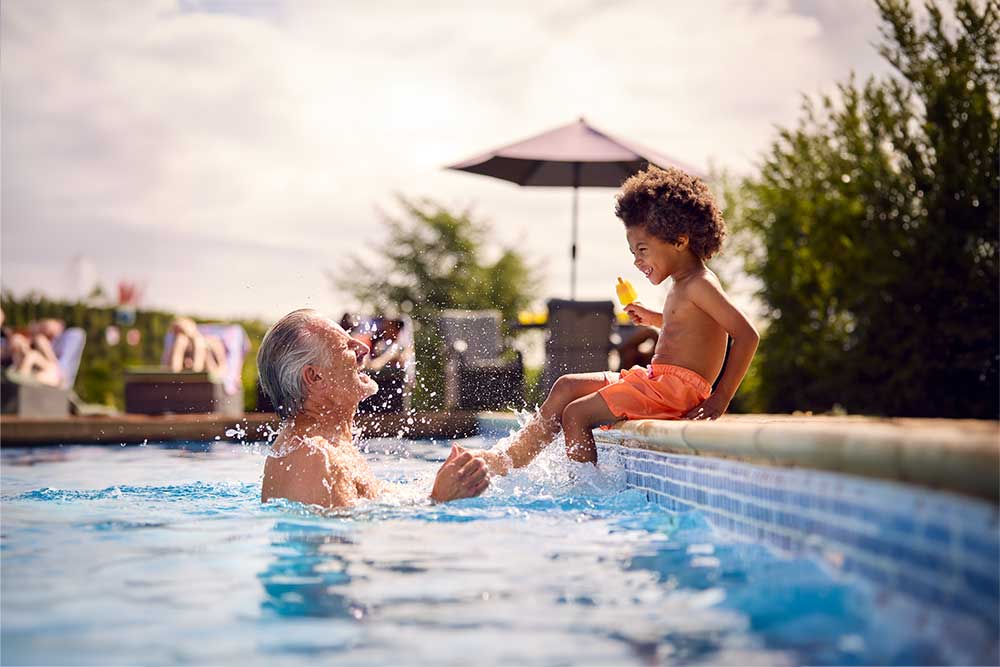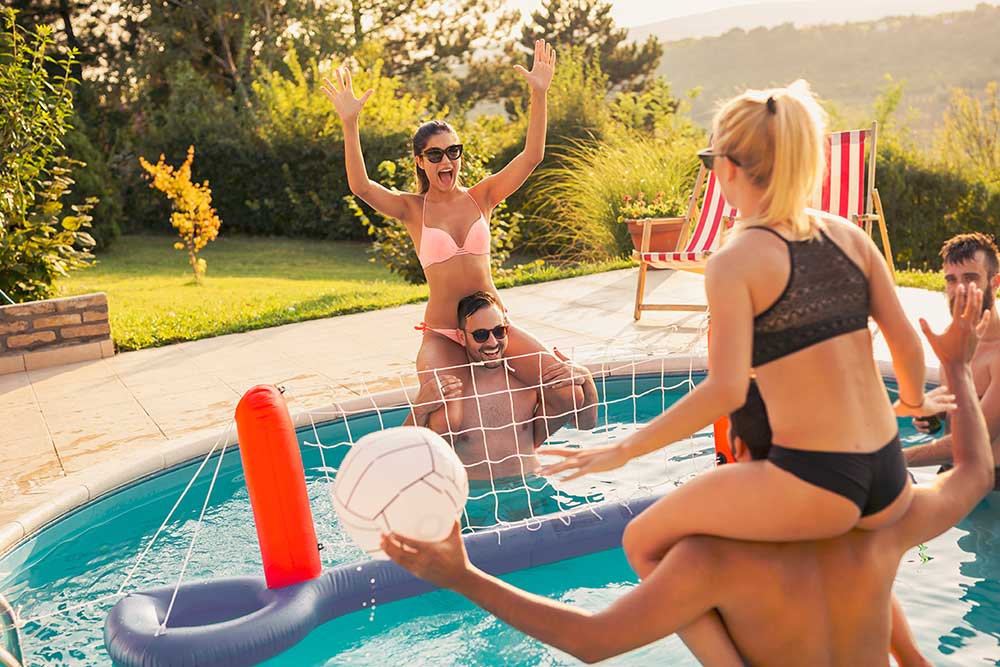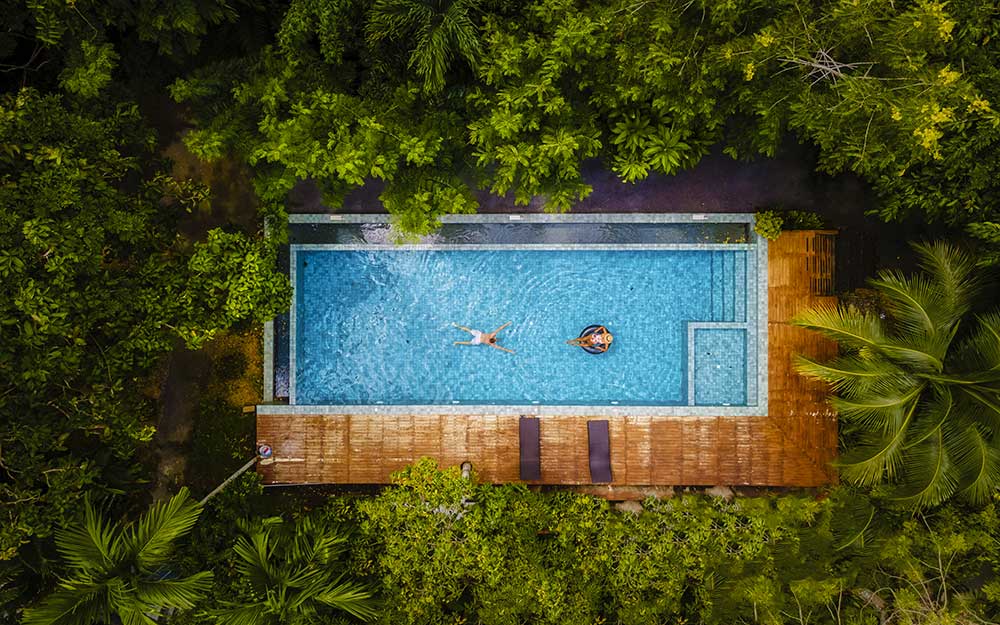
The swimming pool market is faced with these new climatic realities and certain restrictive decrees.
Indeed, certain French municipalities facing increasingly frequent periods of drought, such as the town hall of Elne in the Pyrénées-Orientales, issue renewable decrees prohibiting the construction of swimming pools due to drought.
These measures limit the possibilities of installing new swimming pools or filling an existing swimming pool, thus forcing individuals to rethink their project in a more environmentally responsible manner.
So take the time to read this article to find out everything about the impact of climate change on private swimming pools.
Some equipment manufacturers are seizing the opportunities of eco-responsibility
Faced with environmental constraints, swimming pool equipment manufacturers are turning to eco-responsible solutions, thus transforming these challenges into opportunities.
New technologies are regularly developed to make swimming pools more environmentally friendly.
Heat pumps for swimming pools are an excellent example of this development.
Thanks to their low electricity consumption, they offer an energy-efficient alternative to traditional methods of heating water. Additionally, solar pool heaters are also seeing a rise in popularity, harnessing the sun's renewable energy to heat pool water.
The figures also reveal a changing trend in the market. More and more homeowners are choosing to renovate and better equip their existing swimming pools. This approach makes it possible to maximize the use of existing facilities while integrating greener technologies to reduce their environmental footprint.
Warmpac, a leader in eco-responsibility in the private swimming pool industry

In the midst of this evolving landscape, some companies stand out for their commitment to eco-responsibility in the private pool sector. Among them, the Warmpac company positions itself as a major player in the design, manufacturing and distribution of eco-responsible technological products for swimming pools.
Warmpac offers a range of innovative solutions, including heat pumps using R32 gas, salt electrolysis for more ecological water treatment, pH regulators and home automation boxes for swimming pools (EZPool) to optimize the consumption of electricity and chemicals. These advanced technologies aim to make private swimming pools less energy-intensive and more environmentally friendly.
The company also opened a design office at the beginning of January 2023 intended to design the equipment of tomorrow and strengthen its positioning in a more eco-responsible swimming pool market.
Debunking preconceived ideas about swimming pool water and electricity consumption

It is common to hear that private swimming pools are pitfalls in terms of water and electricity consumption. However, an in-depth analysis reveals that this perception is far from reflecting reality.
A drop in the ocean: water consumption in swimming pools
Contrary to popular belief, private swimming pools represent only a minimal fraction of water consumption in France. Indeed, according to data from the government's “Water Plan”, presented by Emmanuel Macron on March 30, 2023, swimming pools only account for 0.15% of total water consumption in the country. This statistic calls into question the preconceived idea that swimming pools are water wasters.
In addition, it is essential to emphasize that the “Water Plan” does not contain any specific measures concerning private swimming pools. Thus, the government seems to recognize the low impact of these installations on national water consumption and does not plan any particular restrictions against them.
Reducing the electrical footprint of swimming pools: an active role for users
As for the electricity consumption of swimming pools, the situation is nuanced. In fact, the level of consumption varies depending on the installation and maintenance carried out by the owners. Rather than pointing the finger at swimming pools as large consumers of energy, it is essential that users take charge of optimizing their installation. Simple measures, such as using energy-efficient heat pumps or automating the filtration system, can help significantly reduce a swimming pool's electricity consumption.
Changing practices in a few figures
One of the roles of the design office developed by Warmpac in January 2023 is to study in depth the uses and ways of optimizing private swimming pool equipment.
In the debate on the economy of energy, one conclusion undeniably emerges: reducing our energy footprint involves more through the behavior and optimization of our equipment than by simply discarding it.
Here is a summary of the main areas for optimizing the energy consumption of a swimming pool*
*Data collected by the Warmpac / EZPool research office for the months of May 2023 vs May 2022
- Variable filtration saves more than 60% energy


- Protection (tarpaulin, shutter) saves up to 35% of energy


- A drop of 1°C saves up to 7% of energy
- A drop of 2°C saves up to 13.5% energy

- Favoring intelligent automatic heating schedules (via EZ Pool or the touch monitor) (particularly during hot hours before swimming) allows you to save up to 15% of energy.
Asset optimization: swimming pool and heat pump, a winning combination

When considering the installation of a swimming pool, budget is a crucial consideration for any homeowner. A careful cost analysis highlights the importance of the heat pump in this approach, making it possible to optimize the overall investment and offer an enriched bathing experience.
Average budget for installing a swimming pool: 25,000 euros
According to the data collected, the average budget for building a swimming pool on a property is around 25,000 euros. This amount includes all expenses related to the development of the swimming pool, including earthworks, covering, filtration, as well as other associated costs.
The key role of the heat pump
Among the essential expenses, the installation of a heat pump for the swimming pool represents an average investment of 2,500 euros, generally equivalent to 10% of the total cost. Although this share may seem relatively modest, the role of the heat pump is far from negligible.
40% more swimming time thanks to the heat pump
In the absence of a heat pump, a pool owner would generally miss out on average about 40% of swimming time. In fact, this device makes it possible to maintain a pleasant water temperature, even when outside temperatures are cooler. Thus, the swimming season is extended and owners can enjoy their aquatic oasis both in midsummer and in the first days of autumn.
Asset optimization: swimming pool and heat pump, a winning combination
The installation of a swimming pool undeniably enhances the heritage of its owner. However, to take full advantage of this acquisition, the heat pump proves to be a major asset. It optimizes the swimming pool experience by significantly extending the swimming season and guaranteeing moments of relaxation and pleasure throughout the year.
In conclusion: shedding light on prejudices
It is crucial not to be blinded by prejudices regarding private swimming pools. The figures from the “Water Plan” reveal that their water consumption is negligible compared to overall national consumption. Likewise, electricity consumption can be controlled through judicious choices and energy-efficient technologies.
It is therefore up to users to play an active role in optimizing their swimming pool, in order to reconcile pleasure and environmental responsibility. By dropping the clichés, we will be able to better appreciate these refreshing oases, in harmony with our commitment to the preservation of natural resources.
In conclusion, climate change and legislative constraints have profoundly changed the perception of private swimming pools. Manufacturers, like Warmpac, have seized these challenges as opportunities to develop eco-responsible solutions and offer owners the opportunity to build or renovate their swimming pool while limiting their impact on the environment. This responsible approach is essential to ensure the sustainability and preservation of our natural resources in a context of increasing climate change.